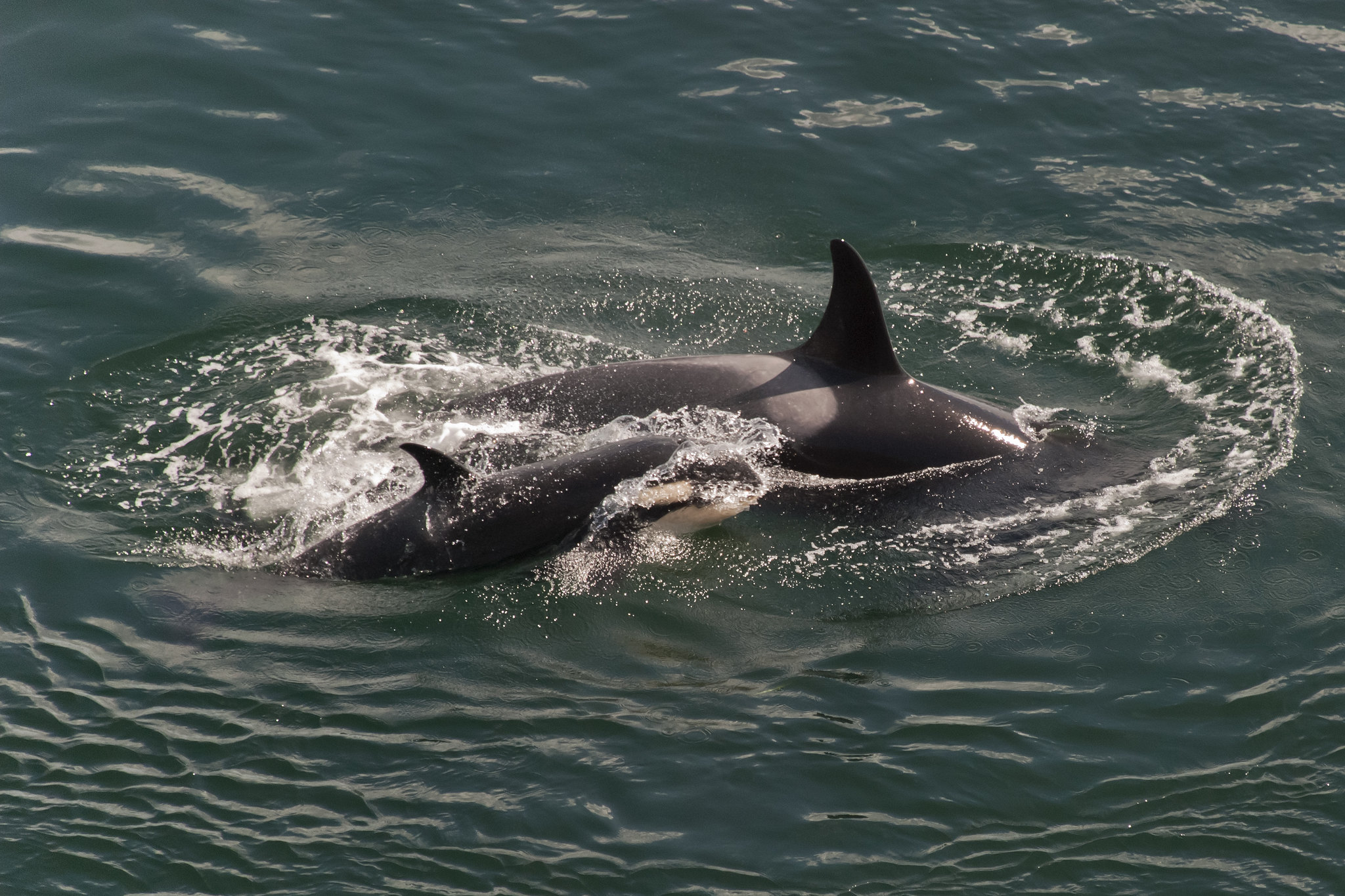In 2018, the orca Tahlequah, or J35, made headlines for her tour of grief, in which she carried the dead body of her calf for 17 days. The baby, which lived only for half an hour, was female. At the time, she marked the first successful birth in Tahlequah's pod, known as the J Pod, in three years. A baby orca can weigh as much as 300 pounds. But each time the body slid off her snout, Tahlequah dove to retrieve it. Tahlequah swam with her dead calf for at least 1,000 miles before she dropped her body, which had begun to decompose. Many people considered Tahlequah's behavior a display of grief, although some researchers had reservations. (Spoiler: I personally find the most logical explanation to be grief.)
In late December 2024, Tahlequah gave birth to another calf, which would have been her third baby to survive, in addition to the 13-year-old Notch, or J47, and the 3-year-old Phoenix, or J57, both male. Tahlequah's new calf, J61, was female, which would have been a boon for the struggling population of southern residents, a culturally distinct population of orcas in the Pacific Northwest that includes J, K, and L pods. On Dec. 24, the Center for Whale Research expressed concern about the health of the calf, which was likely born prematurely. "J35 is an experienced mother, and we hope that she is able to keep J61 alive through these difficult early days," the Center posted on Facebook.
On New Year's Eve, researchers confirmed that J61 had died. And on Jan. 1, researchers learned that Tahlequah was once again carrying her calf's body, just as she did in 2018: clinging to a fin with her teeth or floating it above her head, as Lynda V. Mapes wrote in the Seattle Times.
The news is devastating for anyone who followed Tahlequah's journey seven years ago, which helped draw attention to the perils facing the southern residents. The population has been reeling since 1960s, when marine parks began rounding up, trapping, and transporting whales to various theme parks and aquariums. Shamu, one of the most famous captive orcas, was a southern resident, captured in 1965 after her mother was killed with a harpoon. About a third of the population was sold to aquariums over the next decade, and never fully recovered. Today, the population of southern residents numbers in the 70s and is officially listed as endangered.
Although orcas are found in every ocean around the world, the southern residents face a daunting compendium of threats. Passing ships drown out the soundscapes of their home, interfering with their foraging and even striking the whales directly. The orcas' preferred prey of meaty Chinook salmon are scarcer and smaller than ever due to longstanding threats of dams and pollution. Their home waters of the Salish Sea brim with chemical pollutants, including languishing PCBs and DDTs that are concentrated in the salmon. The southern residents are the most polluted whales in the world, and these contaminants can lead to numerous health problems that cause cancer, miscarriage, and other ills.
This is why pregnancy is so precious, and precarious, for the southern residents. A 2017 paper revealed that the orcas lost up to 69 percent of their pregnancies, up to 33 percent of which resulted in late miscarriages or in a calf dying immediately after birth. Even surviving calves face struggles; killer whales around the world experience a high mortality rate within their first year, about 50 percent.
Orcas are among the handful of mammals that experience menopause, in which mothers survive long after they stop reproducing. A 2019 paper suggested baby orcas have a better chance at survival if their grandmothers are around. These elder females possess decades of knowledge about where to forage in times of food scarcity, and they also can babysit. In 2017, the matriarch of the J pod, Granny, or J2, died at the estimated age of 57. Tahlequah's mother, Princess Angeline, or J17, died in 2019 at the age of 42, removing a crucial line of support.
Tahlequah is only 26 or 27, meaning she may still have more calves. Indeed, many people saw J61 as a sign of hope, not just for Tahlequahr but for her larger pod, and imperiled population. One 2024 paper deemed the southern residents' situation a "bright extinction": a visible, highly documented, and precipitous decline of a species toward extinction. Preventing this extinction is still possible, but would require extraordinary measures, the researchers argue. And the longer these measures take to enact, the more extreme they will need to be.
It is reasonable to expect that Talehquah and the other female southern resident orcas will continue enduring difficult pregnancies that often end in failure. And it is also reasonable to expect that Tahlequah is not a singular, extraordinary orca capable of unusual empathy of grief. Every single whale likely experiences and remembers the death of their baby in their own, unknowable fashion; only some choose to physicalize their mourning. To me, Tahlequah's second tour of grief exemplifies the unquantifiable emotional toll of extinction for the animals teetering on its edge. It is easy to count the animals, or the species, that have died, but it is far more difficult to enumerate their suffering.






